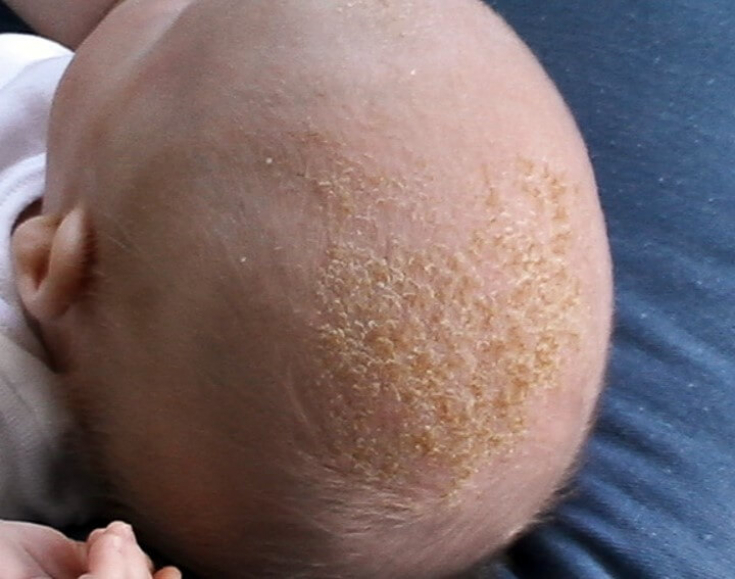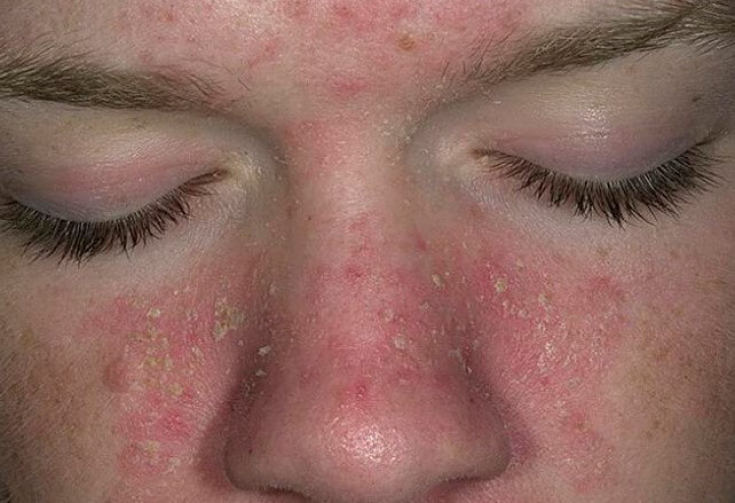Seborrheic dermatitis is considered a chronic form of eczema and appears on the body where there are many sebaceous glands, such as the upper back, nose and scalp.
The exact cause of seborrheic dermatitis is unknown, although genetic predisposition and hormonal background play a role in causing this disease.
Microorganisms that naturally live on the skin can also contribute to seborrheic dermatitis.
On estet-portal.com read about the manifestations of seborrheic dermatitis and effective treatments for this disease.
- Why Seborrheic Dermatitis Occurs
- Main symptoms of seborrheic dermatitis
- What Causes Seborrheic Dermatitis
- Treatment of seborrheic dermatitisa
What causes seborrheic dermatitis
People of any age can develop seborrheic dermatitis, including children (known as "lullaby cap").

However, it most commonly affects adults between the ages of 30 and 60 and children under 3 months of age.
include:
stress;- hormonal changes or reduced immunity;
- harsh detergents, solvents, chemicals and soaps;
- cold and dry weather;
- drugs such as psoralen, interferon and lithium.
- In general, seborrheic dermatitis is slightly more common in men than in women.
Patients with diseases that affect theimmune system
(e.g. HIV/AIDS, psoriasis) and nervous system (Parkinson's disease) are also at increased risk of developing seborrheic dermatitis .
Seborrheic dermatitiscan also affect people who have:
epilepsy;- alcoholism;
- acne;
- rosacea;
- depression;
- eating disorders
i. - Does being overweight affect the risk of developing psoriasis
Main symptoms of seborrheic dermatitis Seborrheic dermatitis often appears on
scalpwhere symptoms can range from dry flakes (dandruff) to yellow, oily flakes with reddened skin.
Patients may also develop seborrheic dermatitis on other fatty areas of the body such as face,
upper chest and back.
oily, somewhat "swollen" leather;
appearance of white or yellowish crusts;- itching and burning;
- spots of pink.
, such as 
Topical retinoids in dermatology and cosmetology
What causes seborrheic dermatitis The exact etiology of seborrheic dermatitis is unknown, although genetic predisposition to the disease, as well as the influence of
hormonal levels.
Microorganisms such as yeast that naturally live on the skin can also contribute to seborrheic dermatitis. Unlike many other forms of eczema, seborrheic dermatitis is not the result of allergies.
The diagnosis of seborrheic dermatitis is made on the basis of history of the disease and
clinical examination. Sometimesskin microscopy
is required to detect fungal flora. Similarly, a skin biopsy (a procedure in which a small sample of skin is taken) may be needed to rule out other conditions that look likeseborrheic dermatitis. Read the most interesting articles in Telegram
! Seborrheic Dermatitis Treatment Treatment of seborrheic dermatitis is aimed at:
reduced scaling;reduction of inflammation and swelling;
reduce itching.
- In mild cases, a topical antifungal cream or medicated shampoo (such as ketoconazole, selenium sulfide, coal tar, or zinc pyrithione) may be sufficient to control symptoms.
- Recommendations for the treatment of seborrheic dermatitis include:
Alternate between regular and medicated dandruff shampoo.
2. Body:Wash daily with a mild cleanser containing 2% zinc pyrithione followed by a moisturizer.
To further soften the crusts, a cream containing salicylic acid and sulfur.
In more severe cases, topical corticosteroids may be used to reduce inflammation. In cases where corticosteroids are not suitable, or when they have been used for a long period, topical preparations that do not contain corticosteroids, such as
tacrolimusor pimecrolimus, may be prescribed.
These drugs are called topical calcineurin inhibitors and are approved for use in adults and children aged two years and older.
Read also: Basic approaches to the treatment of allergic dermatitis







Add a comment